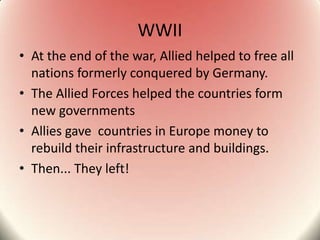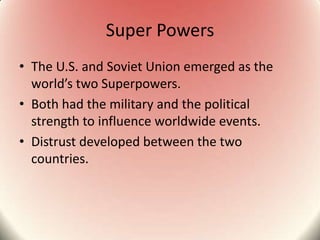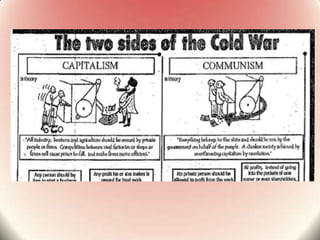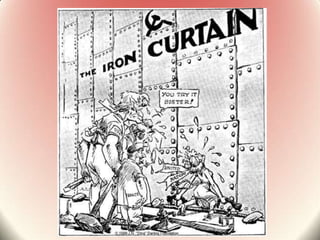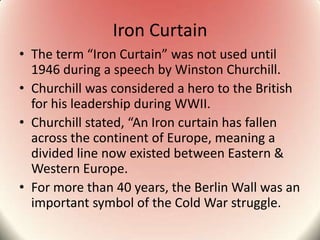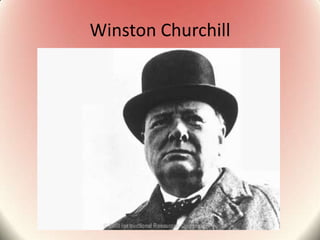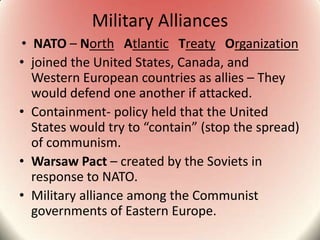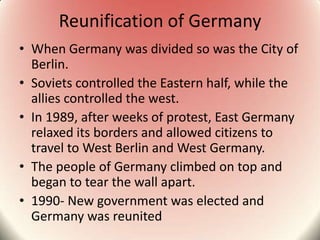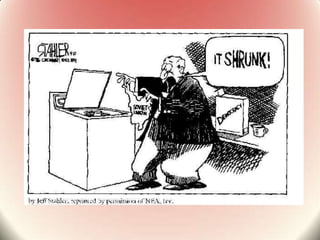After WWII, the US and Soviet Union emerged as superpowers with opposing ideologies, leading to distrust and a rivalry known as the Cold War. Each sought to spread its political system and stockpiled weapons, and engaged in a space race for prestige. The division of influence created an "Iron Curtain" across Europe. In the late 1980s, reforms under Gorbachev and economic troubles in the Soviet Union weakened its control over Eastern Europe and led to the reunification of Germany. Ultimately, the Soviet Union dissolved in 1991, bringing an end to the Cold War.



